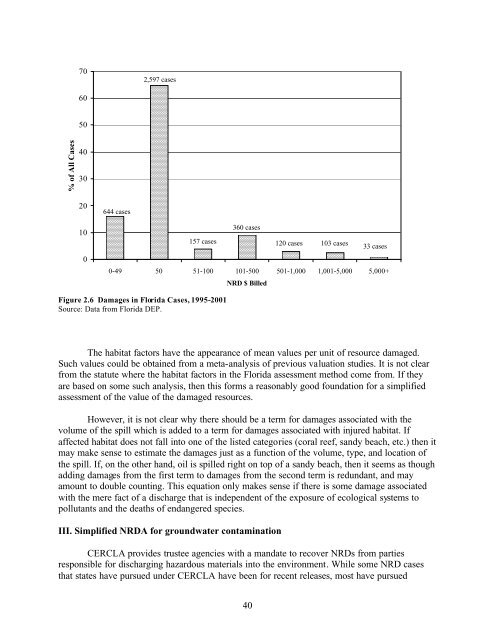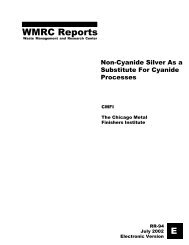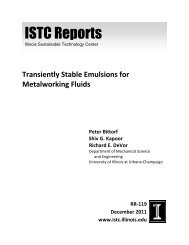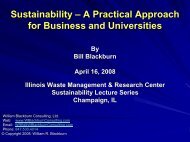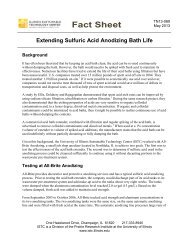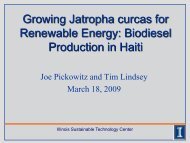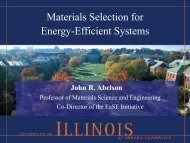Natural Resource Damage Assessment: Methods and Cases
Natural Resource Damage Assessment: Methods and Cases
Natural Resource Damage Assessment: Methods and Cases
You also want an ePaper? Increase the reach of your titles
YUMPU automatically turns print PDFs into web optimized ePapers that Google loves.
% of All <strong>Cases</strong><br />
70<br />
60<br />
50<br />
40<br />
30<br />
20<br />
10<br />
0<br />
644 cases<br />
2,597 cases<br />
157 cases<br />
0-49 50 51-100 101-500 501-1,000 1,001-5,000 5,000+<br />
Figure 2.6 <strong>Damage</strong>s in Florida <strong>Cases</strong>, 1995-2001<br />
Source: Data from Florida DEP.<br />
360 cases<br />
NRD $ Billed<br />
40<br />
120 cases 103 cases<br />
33 cases<br />
The habitat factors have the appearance of mean values per unit of resource damaged.<br />
Such values could be obtained from a meta-analysis of previous valuation studies. It is not clear<br />
from the statute where the habitat factors in the Florida assessment method come from. If they<br />
are based on some such analysis, then this forms a reasonably good foundation for a simplified<br />
assessment of the value of the damaged resources.<br />
However, it is not clear why there should be a term for damages associated with the<br />
volume of the spill which is added to a term for damages associated with injured habitat. If<br />
affected habitat does not fall into one of the listed categories (coral reef, s<strong>and</strong>y beach, etc.) then it<br />
may make sense to estimate the damages just as a function of the volume, type, <strong>and</strong> location of<br />
the spill. If, on the other h<strong>and</strong>, oil is spilled right on top of a s<strong>and</strong>y beach, then it seems as though<br />
adding damages from the first term to damages from the second term is redundant, <strong>and</strong> may<br />
amount to double counting. This equation only makes sense if there is some damage associated<br />
with the mere fact of a discharge that is independent of the exposure of ecological systems to<br />
pollutants <strong>and</strong> the deaths of endangered species.<br />
III. Simplified NRDA for groundwater contamination<br />
CERCLA provides trustee agencies with a m<strong>and</strong>ate to recover NRDs from parties<br />
responsible for discharging hazardous materials into the environment. While some NRD cases<br />
that states have pursued under CERCLA have been for recent releases, most have pursued


